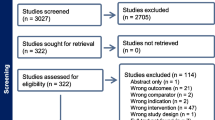Abstract
Pain is a subjective response that limits assessment. The purpose of this case report was to explore how the objectivity of the electroencephalographic response to thermal stimuli would be affected by concurrent spinal cord stimulation. A patient had been implanted with a spinal cord stimulator for the management of complex regional pain syndrome of both hands for 8 years. Following ethical approval and written informed consent we induced thermal stimuli using the Medoc PATHWAY Pain & Sensory Evaluation System on the right hand of the patient with the spinal cord stimulator switched off and with the spinal cord stimulator switched on. The patient reported a clinically significant reduction in thermal induced pain using the numerical rating scale (71.4 % reduction) with spinal cord stimulator switched on. Analysis of electroencephalogram recordings indicated the occurrence of contact heat evoked potentials (N2–P2) with spinal cord stimulator off, but not with spinal cord stimulator on. This case report suggests that thermal pain can be reduced in complex regional pain syndrome patients with the use of spinal cord stimulation and offers objective validation of the reported outcomes with this treatment.


Similar content being viewed by others
References
Kemler MA, Barendse GA, van Kleef M, de Vet HC, Rijks CP, Furnée CA, van den Wildenberg FA. Spinal cord stimulation in patients with chronic reflex sympathetic dystrophy. N Engl J Med. 2000;343:618–24.
Gong W, Johanek LM, Sluka KA. Spinal cord stimulation reduces mechanical hyperalgesia and restores physical activity levels in animals with noninflammatory muscle pain in a frequency-dependent manner. Anesth Analg. 2014;119:186–95.
Sato KL, King EW, Johanek LM, Sluka KA. Spinal cord stimulation reduces hypersensitivity through activation of opioid receptors in a frequency-dependent manner. Eur J Pain. 2013;17:551–61.
Sato KL, Johanek LM, Sanada LS, Sluka KA. Spinal cord stimulation reduces mechanical hyperalgesia and glial cell activation in animals with neuropathic pain. Anesth Analg. 2014;118:464–72.
Kemler MA, Reulen JP, Barendse GA, van Kleef M, de Vet HC, van den Wildenberg FA. Impact of spinal cord stimulation on sensory characteristics in complex regional pain syndrome type I: a randomized trial. Anesthesiology. 2001;95:72–80.
Harden RN, Bruehl S, Stanton-Hicks M, Wilson PR. Proposed new diagnostic criteria for complex regional pain syndrome. Pain Med. 2007;8:326–31.
Chen A, Niddam D, Arendt-Nielsen L. Contact heat evoked potentials as a valid means to study nociceptive pathways in human subjects. Neurosci Lett. 2001;316:79–82.
Pralong E, Pollo C, Bloch J, Villemure JG, Daniel RT, Tétreault MH, Debatisse D. Recording of ventral posterior lateral thalamus neuron response to contact heat evoked potential in patient with neurogenic pain. Neurosci Lett. 2004;367:332–5.
Mayhew SD, Hylands-White N, Porcaro C, Derbyshire SW, Bagshaw AP. Intrinsic variability in the human response to pain is assembled from multiple, dynamic brain processes. Neuroimage. 2013;75:68–78.
Acknowledgments
The authors received no financial support for the research, authorship, and/or publication of this article.
Author information
Authors and Affiliations
Corresponding author
Ethics declarations
Conflicts of interest
The authors declare no potential conflicts of interest with respect to the research, authorship, and/or publication of this article.
Additional information
Nicholas Hylands-White and Rui V. Duarte have contributed equally to this study.
Rights and permissions
About this article
Cite this article
Hylands-White, N., Duarte, R.V., Beeson, P. et al. Electroencephalographic evoked pain response is suppressed by spinal cord stimulation in complex regional pain syndrome: a case report. J Clin Monit Comput 30, 845–848 (2016). https://doi.org/10.1007/s10877-015-9781-9
Received:
Accepted:
Published:
Issue Date:
DOI: https://doi.org/10.1007/s10877-015-9781-9




